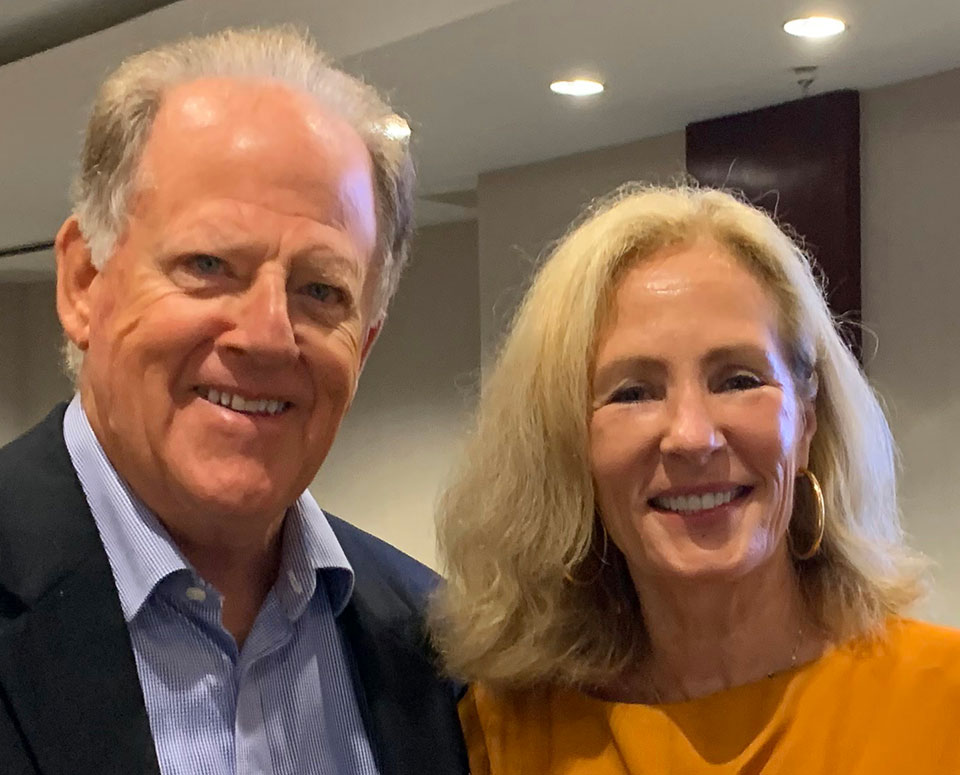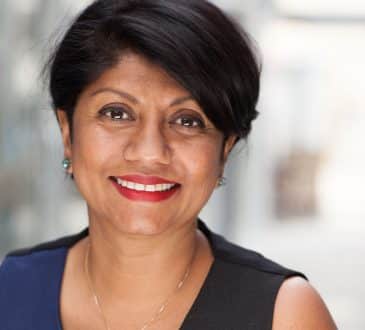A Business Model and A Cultural Model – the Caleres Story

Caleres is a $2 billion global company built around shoes and footwear. Diane Sullivan led the company’s transformation from “selling shoes” to managing shoe brands.
The Brown Shoe Company was founded in St. Louis, Missouri, in 1881 to make leather shoes, no paper insoles, as an alternative to ordering shoes from New England. Black and brown shoes were the only shoes Brown made for decades. Beginning in the 1950s, Brown acquired other shoe manufacturers and shoe retail chains.
Diane Sullivan became president of Brown Shoe in 2004. At that point, Brown owned a collection of shoe companies including Sam Edelman, Allen Edwards, Naturalizer, and Dr. Scholl’s. It also owned the discount shoe retailer Famous Footwear which had been acquired in 1981.
The company’s growth strategy had been, “buy more shoe companies!” Making sense of the hodgepodge of shoe-related companies was the challenge Diane Sullivan faced. She began by asking two questions.
- What is the Caleres business model?
- What cultural values unite the company’s strategy, operations, and consumer-facing brands?
At the time of our conversation in the fall of 2021, Caleres was coming out of a near-death experience with the COVID lockdown. Building on Diane’s experience, I wrote an article entitled COVID-19 – Your Chief Innovation Officer describing the adaptations the company made responding to the COVID-19 challenge that will make their operations stronger in the long run.
In this piece, I look at two challenges Diane Sullivan faced when she became President and what she did to reinvent the concept of the company. I will share lessons learned that I believe can be helpful to you as you plan the future of your organization.
What Is the Caleres Business Model?
When Diane Sullivan became president of Brown Shoe Company, the company was in the business of making shoes. The two major Caleres “divisions” were a collection of unrelated shoe manufacturing companies and a chain of about 1,000 retail shoe stores selling brand name shoes at discount.
As the new leader of Brown Shoe, Sullivan faced a set of complex interrelated challenges. The questions she put to her leadership team were:
- What is the business model of Brown Shoe Company?
- Where does our revenue come from today and where will if come from in the future?
- Where are we making a profit and where will profit come from in the future?
- How will our customers buy shoes in the future? How will they buy our shoes?
Historically, revenue growth came from acquisition more than organic sales growth. Stock market expectations rested on an acquisition strategy rather than growing revenues from the existing business units. And, retail customers were not buying “Brown Shoes” but footwear products with different brand names.
Under Diane Sullivan’s leadership the concept of “who we are” as a company changed. Brown Shoe redefined itself from being a “shoe company” to being a company that owns and manages footwear brands and manages the P&L of the brands and the overall company. Brown Shoe became Caleres.
The second transition was defining the characteristics and expectations for a company under the Caleres umbrella. Moving from a collection of mostly unrelated shoe companies to a family of companies with common operating standards and values was a five-year effort. The goal was to strengthen each Caleres brand to make its shoes into the quality product in its market segment that is trusted and loved by the consumer. Lower quality and lower cost would not be part of the Caleres family of brands.
Making the footwear brands controlled by Caleres more valuable became the strategic focus of the company. Designing profitable in-store and online sales channels became the business model focus. When Caleres looks at a potential acquisition, the position and value of the brand is the first screening question. The value of the customer base is the second question. Adding customers with a high lifetime value is the goal over simply adding revenue.
Sales and distribution channels have changed for shoes as they have for most retail products. The challenge has been moving to where the consumer is going while changing the financial model to capture profitability and not chase revenues.
Online shopping is an important component of retail shoe sales. The balance between online and brick and mortar sales in the future is not clear. Caleres has 30 million customers in its database. The connection of these potential customers to the Caleres brands ranges from weak to strong. Promotions to weak link online customers may drive revenues but do not drive profits. Online shoppers are strongly influenced by promotions, and the lifetime value of shoppers who only buy online is low. In Caleres’ Famous Footwear retail stores, 75% of revenues come from “loyalty customers.” The highest value customer is shopping both online and in the store. Caleres changed its financial model included reducing promotions and inventories to focus on the high-value customers.
If you think shoe companies are just “selling shoes,” think again. Customers expect new shoe designs four times every year. Every new shoe design must express the values of that brand. The values of each new shoe design become the value proposition for that brand’s shoes in the minds of its customers. Value perceptions can change almost instantly. There is little margin for error.
Finding a Unifying Culture
Peter Drucker is often credited with saying, “Culture eats strategy for breakfast.” Whether Drucker actually said those words is debatable, but the concept was an important driver of Sullivan’s work bringing Caleres to where it is today.
We usually begin our description of a company by its products and revenues. Caleres’ revenues are over $2 billion and it operates in 68 countries with 8,400 employees. Diane Sullivan led the company’s transformation from being a “shoe company” to being a company managing brand name footwear companies. She also challenged to company to define its culture:
- Who are we as a company?
- What unites us as a company, as leaders of this company, and as employees?
- What is our purpose as a company, as leaders, and as employees?
- What are our values and our passions?
Sullivan asked whether Brown Shoe, and then Caleres, was simply a financial holding company with loosely related subsidiaries in the consumer products business. Or, was there a shared identity and purpose across Caleres that would create a synergy of value beyond a collection of shoe companies?
Defining a unifying culture and getting buy-in across a large and diverse company was hard to do. But this process was an essential element of Caleres’ transformation to a unified company. The combination of mission and values became the culture that, over time, produced higher financial performance at the operating company level and at the corporate level.
The Caleres mission: Inspire people to feel great – feet first.
Values that drive us:
- Passion
- Accountability
- Curiosity
- Creativity
- Caring
The mission and values guide the decisions Caleres leaders make, build employee commitment to the company, and create customer loyalty to the company’s brands.
Caleres is a consumer-facing retail products company. Defense contractor Lockheed Martin has a different mission and values statement. – We apply our passion for purposeful innovation to keep people safe and solve the world’s most complex challenges.
Simply making more money is the goal some business owners. If that works for a while, so be it. Organizations dependant on the active engagement of a leadership team with opportunities outside the organization and of its employees with other options will only succeed with a shared commitment to the mission of the organization and collaboration built on shared values. Diane Sullivan made Caleres a more valuable company for its shareholders by imagining a unifying culture for the company and inculcating its mission and values across the company’s operations.
Key Takeaways
Diane Sullivan, the company’s board, and its senior leadership choose a path forward for the company. They decided that Caleres would be a company that owns and manages footwear brands. And, the purpose of the company would be to “inspire people to feel great – feet first.”
You will raise the value of your company by:
- Deciding, “Who are we first? What are we selling?”
- Defining a compelling value proposition for your customers.
- Defining a competitive strategy for your products and the company’s position among its competitors.
- Defining a business model that generates profits and not just revenue.
- Developing a culture that supports your company’s strategy and business model and is compelling to your employees and customers.
————–
Written by Rick Williams.
Have you read?
# Best CEOs In the World Of 2022.
# TOP Citizenship by Investment Programs, 2022.
# Top Residence by Investment Programs, 2022.
# Global Passport Ranking, 2022.
# The World’s Richest People (Top 100 Billionaires, 2022).
Author Contact Information
Bring the best of the CEOWORLD magazine's global journalism to audiences in the United States and around the world. - Add CEOWORLD magazine to your Google News feed.
Follow CEOWORLD magazine headlines on: Google News, LinkedIn, Twitter, and Facebook.
Copyright 2025 The CEOWORLD magazine. All rights reserved. This material (and any extract from it) must not be copied, redistributed or placed on any website, without CEOWORLD magazine' prior written consent. For media queries, please contact: info@ceoworld.biz








